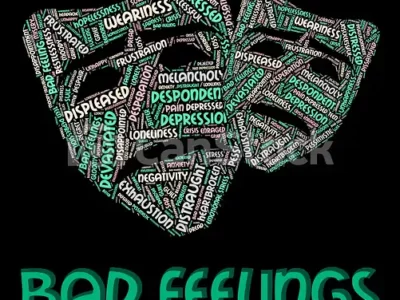MAP AND SHAPE OF EARTH AND ITS HISTORY
Physicists will find it shocking, but there are plenty of people around the world who genuinely believe the Earth is flat. Rachel Brazil explores why such views are increasingly taking hold and how the physics community should best respond
In 2017 the US rapper B.o.B (real name Bobby Ray Simmons Jr) started a crowd-funding campaign to launch a satellite. The rapper, a vocal proponent of “flat-Earth theory”, wanted to seek evidence that our planet is a disc, not a globe. His aim was to raise $200,000 (later upped to $1m) on the GoFundMe website, with the aim of sending one or more craft into space to help him “find the curve” – the term that “flat-Earthers” use to describe the edge of our supposed disc-shaped planet.
MAP OF EARTH AND ITS HISTORY

- EARTH STARTING
- HISTORY OF MAP OF THE EARTH
- TYPES OF MAP
- CARTOGRAPHY AND CHARTS
- SCALES AND PROJECTION
- SCALES 2
- SURVEY
- SEA LEVEL
- TOPO MAP READ
SHAPE OF EARTH AND ITS HISTORY
- HISTORY – SHAPE OF EARTH
- EQUATOR-CANCER-CAPRICORN
- IMAGINARY LINES
Physicists will find it shocking, but there are plenty of people around the world who genuinely believe the Earth is flat. Rachel Brazil explores why such views are increasingly taking hold and how the physics community should best respond
In 2017 the US rapper B.o.B (real name Bobby Ray Simmons Jr) started a crowd-funding campaign to launch a satellite. The rapper, a vocal proponent of “flat-Earth theory”, wanted to seek evidence that our planet is a disc, not a globe. His aim was to raise $200,000 (later upped to $1m) on the GoFundMe website, with the aim of sending one or more craft into space to help him “find the curve” – the term that “flat-Earthers” use to describe the edge of our supposed disc-shaped planet.
The rapper’s quest may seem like a joke or publicity stunt. Indeed, there’s currently no evidence that B.o.B raised much money or got anywhere near his goal. However, in the last few years, there has been an alarming rise in the number of people who, like B.o.B, believe in flat-Earth theories. There’s now an annual flat-Earth conference in the US – the most recent of which was attended by more than 600 people – while YouTube is full of videos purporting to provide evidence that the Earth is flat.
Physicists may mock the notion of a flat Earth, but the idea is gaining traction, particularly among people susceptible to other conspiracy theories. “They actually really do believe it,” says Lee McIntyre a philosopher from Boston university and an expert in the phenomenon of science denial, whose books include Respecting Truth: Wilful Ignorance in the Internet Age (Routledge, 2015). McIntyre knows first-hand how sincerely flat-Earthers hold their views: he attended the 2018 Flat Earth International Conference in Denver, Colorado.
Ashley Landrum, a psychologist from Texas Tech University who was also at the Denver meeting, agrees that flat-Earthers are genuine, and not goofing around. “If they were [trolling], they are very good actors,” she says. “We talked to more than 90 members of the flat-Earth community and they’re all very sincere in their beliefs”. Lectures at the Denver event included “Talking to your family and friends about flat Earth”, “NASA and other space lies” and “14+ ways the Bible says flat Earth”.
Flat-Earth ideas are based on basic scientific misunderstandings that can be easily refuted. For most people, even those who have no physics background, the evidence for a spherical Earth is obvious. So we need to ask ourselves why these ideas still persist in the 21st century and, perhaps more importantly for the physics community: how exactly should we respond?
A circular history
The idea that the Earth is a sphere was all but settled by ancient Greek philosophers such as Aristotle (384–322 BC), who obtained empirical evidence after travelling to Egypt and seeing new constellations of stars. Eratosthenes, in the third century BC, became the first person to calculate the circumference of the Earth. Islamic scholars made further advanced measurements from about the 9th century AD onwards, while European navigators circled the Earth in the 16th century. Images from space were final proof, if any were needed.
Today’s flat-Earth believers are not, though, the first to doubt what seems unquestionable. The notion of a flat Earth initially resurfaced in the 1800s as a backlash to scientific progress, especially among those who wished to return to biblical literalism. Perhaps the most famous proponent was the British writer Samuel Rowbotham (1816–1884). He proposed the Earth is a flat immovable disc, centred at the North Pole, with Antarctica replaced by an ice wall at the disc’s outer boundary.
The International Flat Earth Research Society, which was set up in 1956 by Samuel Shenton, a signwriter living in Dover, UK, was regarded by many people as merely a symbol of British eccentricity – amusing and of little consequence. But in the early 2000s, with the Internet now a well-established vehicle for off-beat views, the idea began to bubble up again, mostly in the US. Discussions sprouted in online forums, the Flat Earth Society was relaunched in October 2009 and the annual flat-Earth conference began in earnest.
As with any fringe movement there are disagreements and several different flat-Earth models exist to choose from. Some models propose that the Earth’s edges are surrounded by a wall of ice holding in the oceans. Others suggest our flat planet and its atmosphere are encased in a huge, hemispherical snow globe from which nothing can fall off the edges. To account for night and day, most flat-Earthers think the Sun moves in circles around the North Pole, with its light acting like a spotlight. The most recent “US model”, for example, suggests that the Sun and Moon are 50 km in diameter and circle the disc-shaped Earth at a height of 5500 km, with the stars above this on a rotating dome. Many flat-Earthers also reject gravity, with the “UK model” suggesting that the disc is itself accelerating up at 9.8 m/s2 to give the illusion of gravity.
Conspiracy mentality
It would be easy to dismiss flat-Earthers as simply being misguided due to a lack of education. While there are indications that those susceptible to such views have low levels of scientific literacy, Landrum at Texas Tech says that flat-Earthers aren’t necessarily people who don’t believe in science. “It’s not really an education thing,” she says. “It really is about distrusting authorities and institutions. [It] seems to be based on both a conspiracy mentality and a deeply held belief that looks a lot like religiosity but isn’t necessarily specifically tied to a religion”.
Proving the Earth isn’t flat
It was McIntyre’s work on science denial that led him to the 2018 flat-Earth conference in Denver, where delegates spent time discussing the “evidence” and finer details of their theory as well as the supposed conspiracy that flat-Earthers believe is shielding their ideas from the wider public. “I thought that if I could understand how to push back against flat-Earthers, I could use the same techniques to fight back against climate-change deniers and anti-vaxxers,” he says. After all, their ideas are generally based on fallacies and misunderstandings of science. “Some of the flat-Earthers know enough physics to throw around the vocabulary, but they don’t actually understand enough physics to be compelled by the truth.”
MAP OF THE WORLD.

- NORTH AND SOUTH AMERICA
- ASIA
- AFRICA
- EUROPE
- AUSTRALIA
- ALL SECTIONS IN THE HISTORY SECTION








